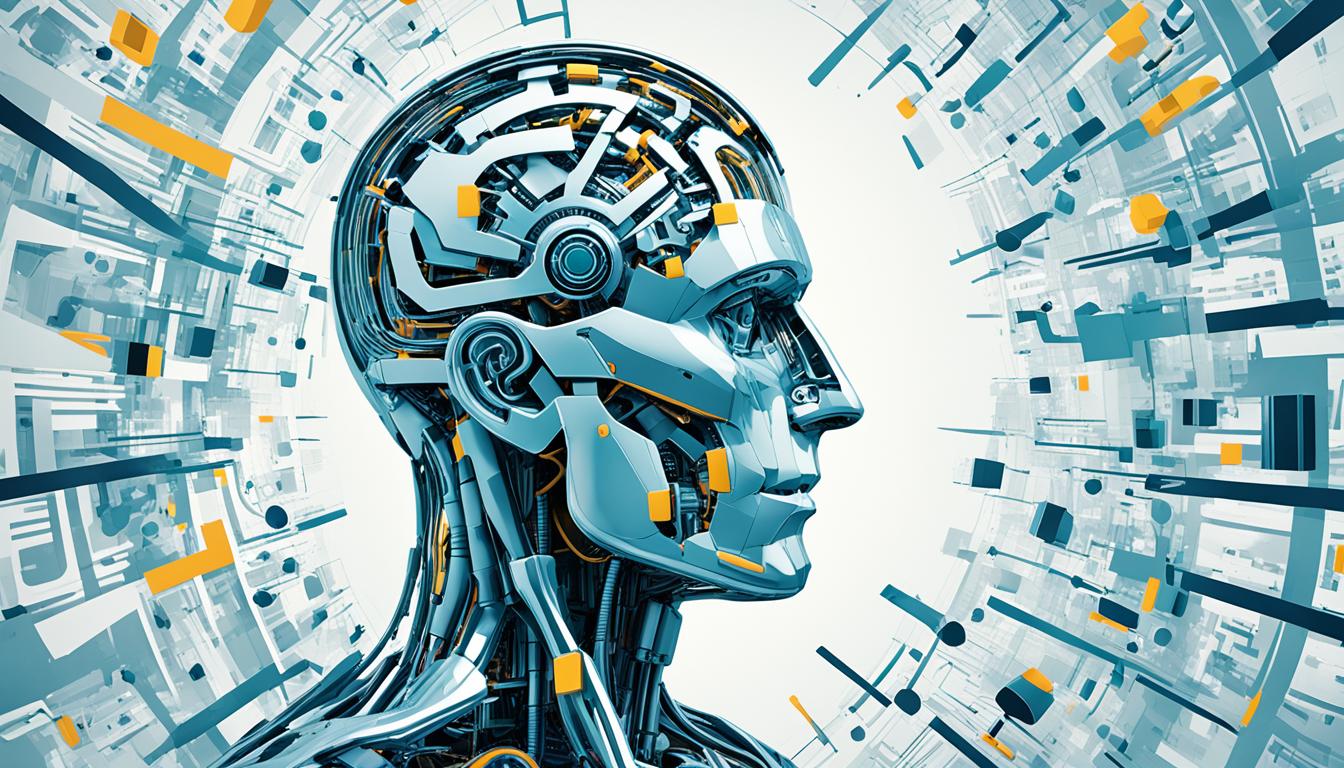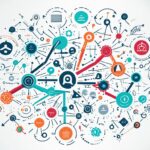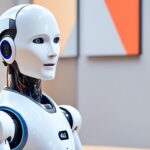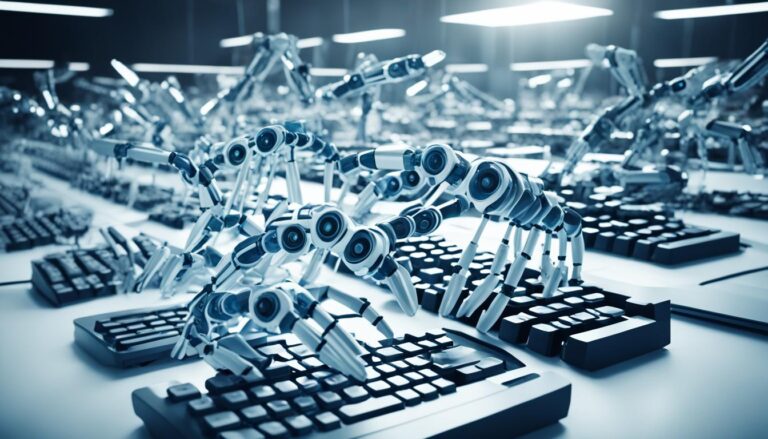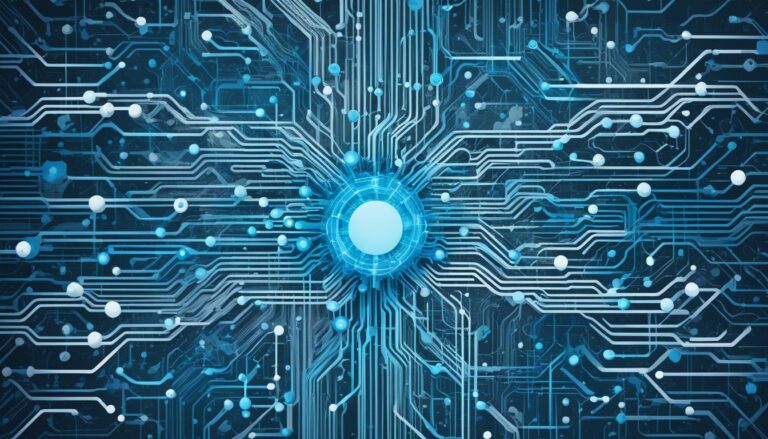Artificial intelligence (AI) is changing the game in higher education. It offers thrilling opportunities but also poses several challenges. Educators and schools must ponder crucial questions to make the most of AI. They need to think about AI’s cultural biases, deciding if we should focus more on teaching machines or humans, understanding what skills leaders need today, examining AI’s role in education, looking at plagiarism and honesty, responsibly using AI chatbots, considering AI’s biases, and reflecting on its ethical and environmental effects.
This article will examine these queries. It will look at how artificial intelligence affects our society, ethics, and economy. By exploring these issues, we can tweak our education systems to benefit from AI while handling its challenges. Join us as we navigate the complex relationship between AI and education.
Can AI be multilingual but monocultural?
Artificial Intelligence, or AI, has changed many areas like language translation and cultural understanding. Yet, there’s a big worry about AI being good at many languages but only one culture. This happens because AI models learn from lots of data from the internet, which might have cultural biases.
AI uses patterns in data to make choices and predictions. If this data comes largely from one culture, the AI might be biased towards it. This makes us think about how fair and inclusive AI really is.
To make AI fairer, we need to use data from many cultures. Adding data from different cultures, languages, and views helps reduce the chance of AI favoring one culture over others.
“Using data from many cultures in AI is key to lessening cultural biases. It makes AI systems better at understanding and valuing human diversity.”
When AI models learn from varied data, they get used to different cultures, languages, and norms. This helps AI understand various viewpoints and reduces biases from learning from one culture only.
It’s also important for teams making AI to be diverse. Having people from different backgrounds helps avoid unintended biases and leads to a more culturally aware AI.
The Importance of Integrating Diverse Data Sets
Using diverse data in AI helps in many ways:
- It cuts down cultural biases. This means AI doesn’t just repeat the biases from its data.
- AI gets better and more useful across cultures because it learns from a mix of data.
- It makes technology fair for everyone by looking at different cultural perspectives.
- It encourages new ideas and creativity by bringing together different cultural insights.
Bringing diverse data into AI is vital to making AI fairer and more inclusive for everyone.
| Culture/Language | Percentage of Data |
|---|---|
| English | 30% |
| Spanish | 20% |
| Chinese | 15% |
| French | 10% |
| Arabic | 10% |
| Other Languages | 15% |
Are we dedicating more resources to teaching machines to learn than teaching humans how to learn?
The rise of AI chatbots and machine learning has sparked a big debate. Are we focusing more on machines than on humans learning? While AI has huge potential in education, we must not forget about improving human learning.
Teaching humans to learn effectively is critical for creating independent and lifelong learners. It’s vital for educators to understand how we learn. This includes both thinking and feelings. Doing so helps students develop strong study skills, think critically, and remember better. We can then prepare them for a future with AI.
“Education is not the filling of a pail, but the lighting of a fire.” – William Butler Yeats
AI chatbots can offer personalized help and handle simple tasks. However, they can’t replace the unique qualities of human teachers. The empathy and deep connection teachers offer are crucial for meaningful learning.
Table: A Comparison of Teaching Machines and Teaching Humans
| Teaching Machines | Teaching Humans |
|---|---|
| Efficiency and scalability | Empathy and emotional support |
| Consistency in delivering content | Adaptability to individual student needs |
| Data-driven insights | Personalized guidance and mentorship |
| Task automation | Creative problem-solving |
We need to balance AI’s power and the human side of learning as we use AI in schools. Merging the best of both can meet various learning needs and dreams.
Integrating Cognitive and Emotional Development
AI might handle lots of data and tailor suggestions. Yet, it often misses the emotional side of learning. Teachers can instill a sense of belonging and drive, helping students reach their peak.
Ensuring an inclusive and effective educational future demands a deep grasp of how we learn. Understanding both mind and heart lets teachers refine their methods. They can use AI as a supportive tool, making learning better.
Acknowledging the key role of human learning is vital for an education system that boosts critical thinking, creativity, and continuous learning. As we deal with the AI revolution, we must remember that education should help people adapt to changes. And cherish what makes us human.
What competencies should a good leader possess to make proper use of AI in education?
To use AI in education well, leaders need a range of skills. These key skills include:
- Knowledge of AI: It’s vital leaders know about AI technologies. They should understand what AI can and can’t do. This knowledge helps them decide how to best use AI in education.
- Data-Driven Decision-Making: AI works with lots of data. So, leaders must be good at understanding data. This helps them make choices based on solid evidence, improving how students learn.
- Ethical and Responsible Use of AI: Using AI right means thinking about ethics. Leaders must ensure AI is used fairly and safely in schools. They should tackle issues like privacy risks and bias in AI systems.
- Critical Thinking Abilities: AI isn’t perfect and can make mistakes. Leaders with strong critical thinking can spot and fix these errors. They question things to make sure AI helps students in the best way possible.
Having these skills means leaders can manage AI’s complex world well. They can bring AI into education in ways that boost learning and fairness.
The picture above shows how varied and important AI skills are for those leading in education.
How vast are the scope and potential of AI in education?
AI shows great promise in changing education. It opens up new ways for personalized learning and AI-assisted grading. It also makes automating results possible. These steps could totally change how we teach, offering custom experiences and making learning more efficient.
In personalized learning, AI’s power really shows. By looking at lots of data, AI can change and fit educational content to each student’s needs. This means students can learn at their own pace. It makes learning more efficient and fun.
AI-assisted grading is another big use of AI in education. It helps teachers grade faster, saving time and effort. AI grading systems grade in a fair and steady way. This reduces the chance of bias. Yet, it’s tricky to balance automation and the need for human judgement in grading.
Also, AI can greatly improve how results are automated. It quickly processes and checks data. This gives teachers and school leaders useful info to better teaching methods and student success. Automation supports smart, info-based decisions, helping teachers make the best educational choices.
Benefits of AI in Education
“AI could transform education. It enables personalized learning, makes grading easier, and automates data checks. This presents an exciting future for education.”
We must consider some important points as we look into AI in education. We need to check if automated results are trustworthy. We also must look at AI’s limits in judging creative aspects of learning. And find the best mix of AI and human teaching roles. By looking at these issues closely, we can use AI to its fullest while keeping education high quality and ethical.
| AI Applications in Education | Benefits |
|---|---|
| Personalized Learning | – Tailored learning experiences – Adaptive content delivery – Individual progress tracking |
| AI-assisted Grading | – Streamlined evaluation process – Consistent and objective grading – Time-saving for educators |
| Automation of Results | – Data-driven decision-making – Improved instructional strategies – Enhanced student outcomes |
How do we address plagiarism and academic integrity in the era of AI?
In the world of learning, keeping academic integrity is key. With AI’s growth, we face new tests and chances. AI helps find copied work with smart tech, but we still worry if it fully works.
“AI has revolutionized the field of plagiarism detection, providing educators with powerful tools to identify suspicious content and ensure academic honesty.”
But, these systems aren’t perfect. They might flag work wrongly or not see all copycats. So, we need a full plan. This plan should teach honesty and how to use AI right.
Educators shouldn’t just use AI for finding plagiarism. They should teach students how to research and write properly. Showing the value of being original helps students value their own work.
“Teaching ethical values and promoting responsible AI use can go hand in hand with utilizing AI-based tools for plagiarism detection.”
We should also learn when AI does or doesn’t fit with staying honest. Talking openly about AI’s role helps guide students through its ethical use.
Integrating Ethical Values and AI Education
Teaching right from wrong with AI is about more than stopping cheating. It prepares students for a future filled with AI in everyday life. Having conversations about ethical AI use teaches students about its risks and rewards.
“Integrating conversations about academic integrity and responsible AI use can help students develop critical thinking skills necessary to navigate the ethical challenges posed by AI.”
Striking a Balance
Finding a middle ground between AI for finding plagiarism and teaching morals is crucial. AI shouldn’t just find copied work. It can also help teach and improve student learning. By using AI tools for creation, educators teach important values for responsible AI use.
As AI grows, schools must create a culture that keeps academic standards high while using AI’s benefits. This means always teaching ethics and responsible AI use. Facing AI’s challenges together, educators can build a future that values honesty and integrity in learning.
Conclusion
The mix of artificial intelligence (AI) and education brings exciting opportunities and big challenges. It’s key we tackle important questions in the AI debate as we look ahead. Addressing AI model biases, focusing on human versus machine learning, leader skills needed, AI’s role in education, concerns about plagiarism, and using AI chatbots responsibly are crucial. This way, we can create a future in education that’s fair, ethical, and effective.
We must make sure AI in education includes everyone. This involves fixing biases in AI, using diverse data, and making AI understand different cultures and languages. It’s also crucial to teach people how to learn well, focusing on how we think and feel while learning.
Leaders need to be ready for the AI era with the right skills. They should understand AI well, make decisions based on data, commit to using AI ethically, and think critically about its challenges. This is vital in the ever-changing world of AI in education.
By looking into these important questions and facing these challenges head-on, we can make the most of AI in education. We aim for a future where AI is inclusive, fair, and considers ethical issues. Staying alert and thoughtful will help us make education better with AI, making it a helpful tool for learning and growth.
FAQ
What are the essential questions for debating the impacts of artificial intelligence?
Key questions in debating AI impacts include: How do AI models carry cultural biases? What’s better: teaching machines or humans? What skills do leaders need for the AI age? How can AI best serve education? How do we ensure fair grading and integrity with AI? What about AI chatbots and their ethical use? How do we tackle AI biases, and what are the ethical and environmental effects of AI?
Can AI be multilingual but monocultural?
Yes. AI models, when trained on data from the internet, might reflect existing cultural biases. We need diverse data in AI development. This ensures we capture broad cultural viewpoints.
Are we dedicating more resources to teaching machines to learn than teaching humans how to learn?
The rise of AI chatbots has sparked discussions. Are we focusing too much on teaching machines over humans? Understanding how we learn is crucial. We must ensure teachers know how to guide students in effective studying and learning techniques.
What competencies should a good leader possess to make proper use of AI in education?
Leaders must grasp AI basics, make data-informed choices, commit to AI’s ethical use, and hone critical thinking. These skills help them adapt, address biases, tackle ethical issues, and pose important questions.
How vast are the scope and potential of AI in education?
AI’s role in education is huge. It offers personalised tutoring, adaptive learning, and AI-assisted marking. But, it raises questions. Is it fair for AI to set final marks? Can it judge creativity? How do we ensure automated results are valid? Addressing these issues is crucial.
How do we address plagiarism and academic integrity in the era of AI?
AI helps detect plagiarism, but it’s not foolproof. We should focus on teaching values for AI’s responsible use. Knowing when AI’s use is appropriate or not aids in maintaining academic integrity.
What is the conclusion on AI debate questions for the inclusive and ethical educational future?
By discussing the key questions and tackling challenges around biases, teaching approaches, leader attributes, AI’s educational role, plagiarism, and integrity, we can craft an inclusive, fair, and impactful educational future with AI.
Source Links
- https://www.iiot-world.com/artificial-intelligence-ml/artificial-intelligence/the-good-the-bad-and-the-ugly-debating-the-ethics-of-ai/
- https://www.al-fanarmedia.org/2024/02/10-essential-questions-to-reimagine-higher-education-in-the-era-of-artificial-intelligence/
- https://www.stjohns.edu/news-media/news/2023-11-22/st-johns-forum-highlights-essential-questions-raised-growth-ai
